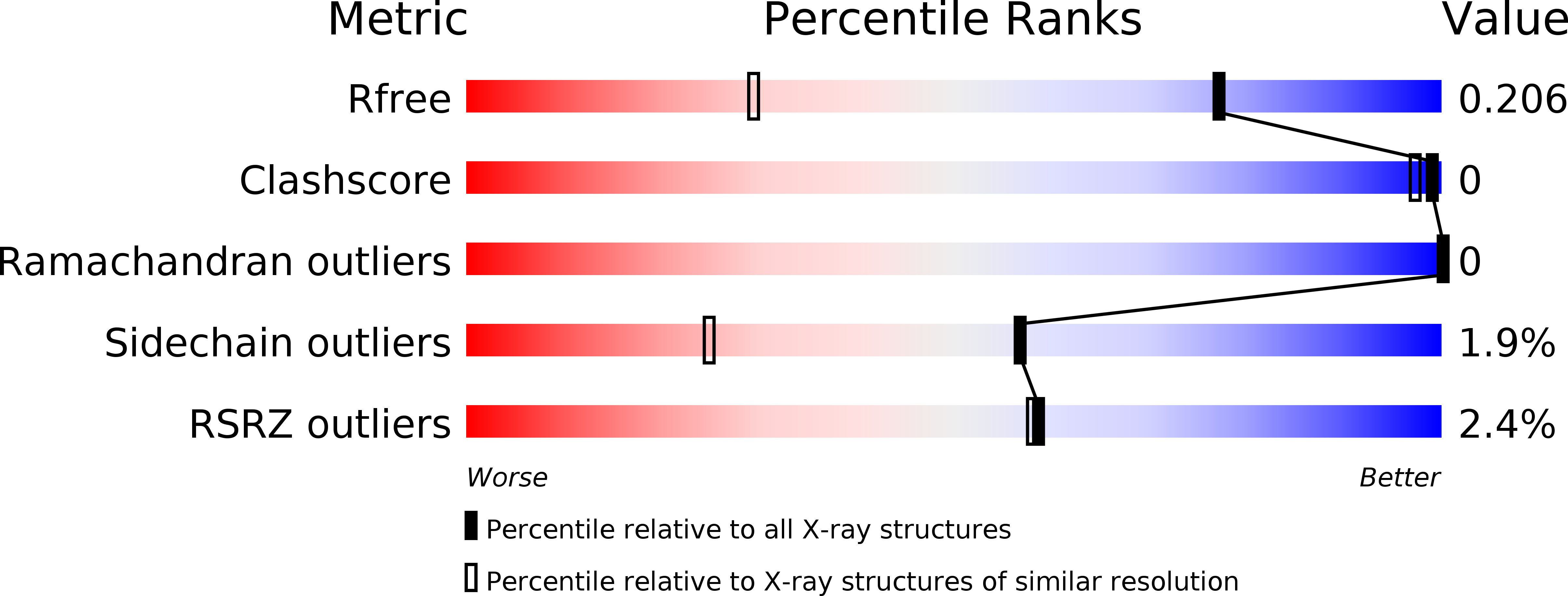
Deposition Date
2004-12-28
Release Date
2005-03-29
Last Version Date
2024-11-13
Entry Detail
PDB ID:
1YE8
Keywords:
Title:
Crystal Structure of THEP1 from the hyperthermophile Aquifex aeolicus
Biological Source:
Source Organism:
Aquifex aeolicus (Taxon ID: 63363)
Host Organism:
Method Details:
Experimental Method:
Resolution:
1.40 Å
R-Value Free:
0.20
R-Value Work:
0.17
R-Value Observed:
0.17
Space Group:
P 1 21 1


